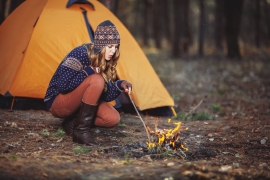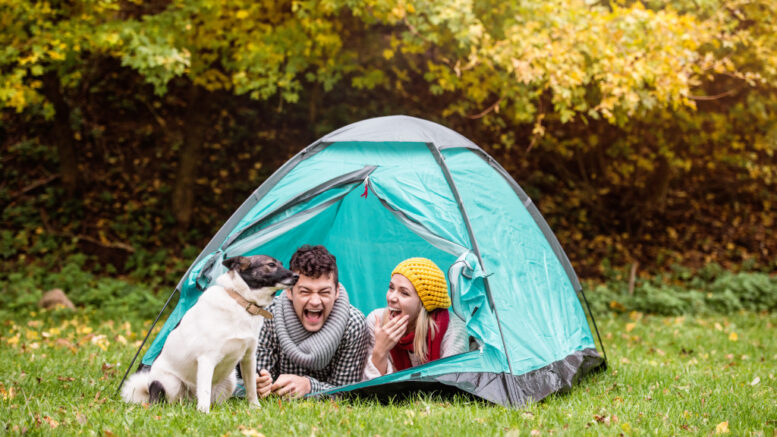Shopping for a new tent can be intimidating, especially for a first-time camper. You have to make sure that it’s safe and durable, and the cost is a factor, too, as tent prices may range from as low as $35 to more than $1,500.
However, with the right information, choosing your first tent should be a breeze. Whether you’re planning a camping trip with friends or exploring a national park on your own, there are some key factors to consider when choosing your perfect tent. Let’s look at what you need to know before investing in a tent of your own.
Size Matters
When shopping for a tent, it’s important to consider how many people will be sleeping in it. Do you plan on sharing the tent with just one other person? Are there three or four of you that need accommodations? Keep in mind that most tents list their capacity as “2-person,” “3-person,” and so on, but those numbers usually refer to how many people could fit inside if they were all lying close together. This is called the rated sleeping capacity.
Size also matters when you consider what type of camping you will do since tent sizes also vary depending on whether it’s simple backpacking or camping as a group. A small, 2-person tent may be suitable for a lone backpacker or a couple. However, a family camping out would want the extra legroom. The more space you have between each person, the more comfortable everyone will be.
Climate Control
Another factor to consider is what kind of climate control features your tent has. If you’re expecting warm weather and sunshine during your camping trip, then mesh panels and well-ventilated windows are key for keeping cool in the heat of the day. Conversely, if rain or snow is part of the forecast, you’ll want to look for a tent with waterproof materials and sealed seams-these features make sure that no water seeps into your sleeping area when it starts raining cats and dogs outside. It’s also helpful to look for tents that come with waterproof floors; these extra layers can help keep moisture away from you while sleeping in damp climates.
Although considered basic features when it comes to tents, those with climate control features are considered to be more expensive than regular ones. This is why some camping veterans also become DIY specialists. For example, waterproofing a camping tent can be a DIY-all you need to do is seal the seams with the appropriate sealer, coat it with urethane or tent fabric sealant, and apply fresh DWR (durable water repellant).

Durability
Lastly, don’t forget about durability when shopping for your tent! Look for sturdy poles and strong fabric that can stand up against windy or stormy conditions-you don’t want any surprise gusts sending your shelter tumbling across the campsite!
A strong fabric also has high tear strength. Durability and tear strength depend on fabric type, weight, and thickness. Look for tents made with materials that have high tear strength ratings so that they won’t easily rip or tear while being assembled in rougher conditions outdoors.
Aside from weight, thickness, and materials, some fabrics also come with extra features like coatings. Most tents come with standard coatings like UV resistance or flame-retardant coatings. Tents that are made with UV-resistant material or have some type of UV protection built into them don’t fade or deteriorate quickly over time when exposed to sunlight regularly. Meanwhile, tents now come with fire-retardant properties built into them as well. This helps protect against accidental fires while camping and ensures that your tent doesn’t go up in flames if exposed to an open flame source such as a campfire or candle flame.
Fabrics can also have special coatings. For example, PVC-coated fabrics make for custom-printed tents. You may want to consider this particularly for branding-focused activities that need custom-printed tarps like outdoor retreats and company gatherings.
These coatings help extend the life of the fabric and make them customizable so that you can enjoy years of use out of your investment.
Investing in a quality tent is an important step towards having successful camping trips-whether they’re solo adventures or group excursions-so make sure to do some research before making a purchase! Once you’ve found the right size for your needs, checked out its climate control features, and tested its durability, then it’s time to start exploring nature with confidence! With these considerations in mind, buying your first tent should become an exciting experience rather than an overwhelming task.

Be the first to comment on "A Beginner’s Guide to Buying Your First Tent"